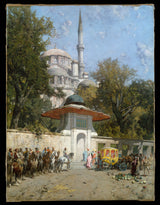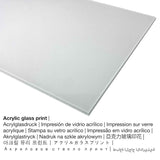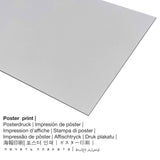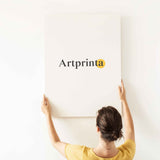Alberto Pasini, 1872 - Ụlọ alakụba - mbipụta nka mara mma
Ụtụ gụnyere. Mbupu gbakọrọ na ndenye ọpụpụ.
Nchịkọta edemede
a 19th narị afọ artpiece named "A Mosque" was painted by the nwoke onye na-ese ihe Alberto Pasini in 1872. The more than 140 years old original has the size: 35 x 26 1/4 na (88,9 x 66,7 cm). Mmanụ na kwaaji was applied by the European artist as the technique for the piece of art. Today, the artpiece is included in the The Metropolitan Museum of Art's digital art collection in New York City, New York, Njikota Obodo Amerika. The nkà nke oge a ngalaba ọha a na-enye mpempe nka site n'ikike nke Ụlọ ihe ngosi nka nke Metropolitan, New York, Arịrịọ nke Collis P. Huntington, 1900. Ọzọkwa, ihe nkiri ahụ nwere kreditline: Arịrịọ nke Collis P. Huntington, 1900. Nhazi nke mmepụta dijitalụ dị na Eserese format ma nwee oke nke 3: 4, nke pụtara na ogologo bụ 25% mkpụmkpụ karịa obosara.
Họrọ ihe kacha amasị gị
Na menu ndọpụta ngwaahịa ị nwere ike họrọ ihe na nha nke nhọrọ gị. Anyị na-ahapụ gị ka ịhọrọ n'ime ụdị ndị a:
- Mbipụta enyo acrylic: An print on acrylic glass, often referred to as a plexiglass print, will convert your favorite original artwork into brilliant décor. With an acrylic glass fine art print contrasts and smaller image details become identifiable with the help of the subtle tonal gradation of the picture.
- Mbipụta nke aluminom: An Aluminium Dibond print is a print with a true effect of depth. The Direct Print on Aluminum Dibond is your best introduction to fine art prints with aluminum. For the Direct Print On Aluminum Dibond, we print your chosen artwork onto the aluminium composite white-primed surface. The bright and white components of the work of art shimmer with a silk gloss, however without glow. The colors are bright and vivid in the highest definition, the details appear crisp and clear, and you can truly notice the matte appearance of the print. The UV print on Aluminum Dibond is one of the most popular entry-level products and is a stylish way to display artworks, as it draws attention on the replica of the artwork.
- Mpempe akwụkwọ ederede (akwa akwa akwa): The poster is a UV printed sheet of canvas paper with a granular surface texture. Please note, that depending on the absolute size of the canvas poster print we add a white margin 2-6cm round about the painting to facilitate the framing.
- Mbipụta kanvas: A printed canvas, which shall not be mistaken with a canvas painting, is a digital copy printed on an industrial printer. Also, a canvas produces a soft and enjoyable feeling. Your printed canvas of your favorite masterpiece will allow you to transform your custom fine art print into a large size collection piece like you know from galleries. How do I hang a canvas on my wall? A canvas print has the advantage of being relatively low in weight, which means that it is easy and straightforward to hang up the Canvas print without additional wall-mounts. Therefore, a canvas print is suited for all kinds of walls.
Important note: We try all that we can to describe the art products as accurately as possible and to illustrate them visually. However, the colors of the printed materials and the imprint might diverge marginally from the image on the monitor. Depending on your screen settings and the quality of the surface, not all color pigments are printed 100% realistically. Bearing in mind that all the are printed and processed by hand, there might as well be slight differences in the motif's size and exact position.
Banyere ngwaahịa
| Bipụta ngwaahịa: | nka nka |
| Mmeputakwa: | dijitalụ mmeputakwa |
| Produzọ mmepụta: | Mbipụta UV / dijitalụ |
| Production: | arụpụtara na Germany |
| Stockdị ngwaahịa: | mmepụta ihe na-achọ |
| Ngwaahịa were: | Ụlọ ihe osise nka, ihe ndozi ụlọ |
| Ndozi onyonyo: | nhazi ihe osise |
| Ụdị anya: | ( Ogologo: obosara) 3: 4 |
| Oke akụkụ pụtara: | ogologo bụ 25% mkpụmkpụ karịa obosara |
| Materials: | Mbipụta iko acrylic (nwere ezigbo mkpuchi iko), mbipụta ọla (aluminium dibond), mbipụta akwa akwa, mbipụta akwụkwọ mmado (akwụkwọ kwaaji) |
| Mbipụta kanvas (akwa akwa na etiti ihe ndọtị) dị iche iche: | 30x40cm - 12x16", 60x80cm - 24x31", 90x120cm - 35x47", 120x160cm - 47x63" |
| Mbipụta iko acrylic (nke nwere ezigbo mkpuchi iko): | 30x40cm - 12x16", 60x80cm - 24x31", 90x120cm - 35x47", 120x160cm - 47x63" |
| Nhọrọ nke mbipụta akwụkwọ mmado (akwụkwọ kwaaji): | 30x40cm - 12x16", 60x80cm - 24x31", 90x120cm - 35x47" |
| Ụdị mbipụta aluminom: | 30x40cm - 12x16", 60x80cm - 24x31", 90x120cm - 35x47" |
| Nhazi nke nnomi nka: | na-enweghị etiti |
Data ndabere gbasara nka
| Iberibe aha nka: | "A Mosque" |
| Nhazi nke ihe nka: | sere |
| Okwu nche anwụ: | nkà nke oge a |
| Century: | 19th narị afọ |
| Afọ okike: | 1872 |
| Afọ nka: | ihe dị ka afọ 140 |
| Usoro izizi: | mmanụ na kwaaji |
| Nha izizi: | 35 x 26 1/4 na (88,9 x 66,7 cm) |
| Ụlọ ihe ngosi nka / ebe: | Museumlọ ihe ngosi nka nke Obodo |
| Ebe ngosi nka: | New York City, New York, Njikota Obodo Amerika |
| ibe weebụ: | Museumlọ ihe ngosi nka nke Obodo |
| Ụdị ikike nka: | ngalaba ọha |
| Site n'aka: | Ụlọ ihe ngosi nka nke Metropolitan, New York, Arịrịọ nke Collis P. Huntington, 1900 |
| Ebe kredit nke ọrụ nka: | Arịrịọ nke Collis P. Huntington, 1900 |
Tebụl onye na-ese ihe
| Aha onye nka: | Alberto Pasini |
| Aliases: | Pasini Alberto, Pasiny, Pasini, pasini a., A. pasini, Pasisni, Alberto Pasini, pasini a. |
| Gender: | nwoke |
| Nationality: | Italian |
| Ọrụ: | onye na-ese ihe |
| Country: | Italy |
| nhazi ọkwa: | omenkà nke oge a |
| Ndụ: | 73 afọ |
| Afọ ọmụmụ: | 1826 |
| Amụrụ na (ebe): | Busseto, mpaghara Parma, Emilia-Romagna, Italy |
| Nwụrụ n'afọ: | 1899 |
Nwebiisinka © | Artprinta.com (Artprinta)
Ozi mgbakwunye site na webụsaịtị ihe ngosi nka (© Nwebiisinka - nke Ụlọ ihe ngosi nka nke Obodo ukwu - www.metmuseum.org)
Pasini here depicts the Yeni Valide Mosque at Eminonu, Istanbul, an Ottoman structure completed in the early eighteenth century. Four women of the Imperial Household enter the mosque by a gateway that Pasini appropriated from another, much later, monument. It was painted two decades after Pasini befriended the artist Théodore Chassériau after arriving in Paris in 1851. When Chassériau was unable to accompany a diplomatic mission to Persia in 1855, Pasini went instead; it was the first of his numerous visits to the East.














